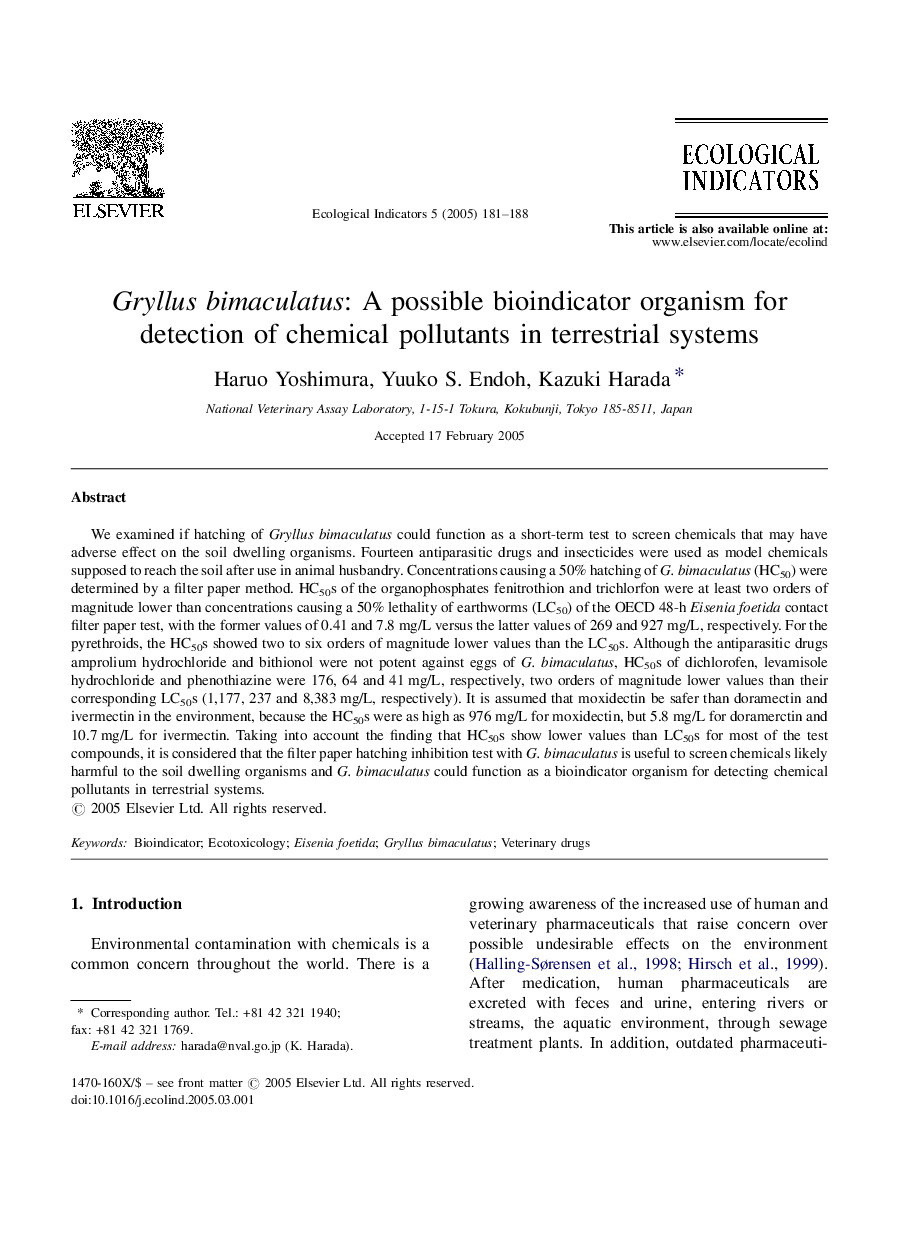| Article ID | Journal | Published Year | Pages | File Type |
|---|---|---|---|---|
| 9443196 | Ecological Indicators | 2005 | 8 Pages |
Abstract
We examined if hatching of Gryllus bimaculatus could function as a short-term test to screen chemicals that may have adverse effect on the soil dwelling organisms. Fourteen antiparasitic drugs and insecticides were used as model chemicals supposed to reach the soil after use in animal husbandry. Concentrations causing a 50% hatching of G. bimaculatus (HC50) were determined by a filter paper method. HC50s of the organophosphates fenitrothion and trichlorfon were at least two orders of magnitude lower than concentrations causing a 50% lethality of earthworms (LC50) of the OECD 48-h Eisenia foetida contact filter paper test, with the former values of 0.41 and 7.8Â mg/L versus the latter values of 269 and 927Â mg/L, respectively. For the pyrethroids, the HC50s showed two to six orders of magnitude lower values than the LC50s. Although the antiparasitic drugs amprolium hydrochloride and bithionol were not potent against eggs of G. bimaculatus, HC50s of dichlorofen, levamisole hydrochloride and phenothiazine were 176, 64 and 41Â mg/L, respectively, two orders of magnitude lower values than their corresponding LC50s (1,177, 237 and 8,383Â mg/L, respectively). It is assumed that moxidectin be safer than doramectin and ivermectin in the environment, because the HC50s were as high as 976Â mg/L for moxidectin, but 5.8Â mg/L for doramerctin and 10.7Â mg/L for ivermectin. Taking into account the finding that HC50s show lower values than LC50s for most of the test compounds, it is considered that the filter paper hatching inhibition test with G. bimaculatus is useful to screen chemicals likely harmful to the soil dwelling organisms and G. bimaculatus could function as a bioindicator organism for detecting chemical pollutants in terrestrial systems.
Related Topics
Life Sciences
Agricultural and Biological Sciences
Ecology, Evolution, Behavior and Systematics
Authors
Haruo Yoshimura, Yuuko S. Endoh, Kazuki Harada,
